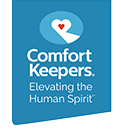Maintaining our physical health as we age is an important part of overall wellbeing. Making activity part of our daily routine becomes more vital as we age but can also be more difficult.
Only 35-44% of adults over 75 are physically active.
Seniors should always discuss their physical activity level and ability with their physician. For most, engaging in 30 minutes of moderate activity each day can have numerous long-term benefits.
There are a variety of low-impact exercises and activities that can be beneficial for seniors. Low-impact exercise can elevate the heart rate, which in turn has physical health benefits.
While it is typically easier to participate in these less rigorous types of exercise, older adults should always talk to their doctor before starting a new program.
Types of low-impact exercise can include:
- Walking: One of the benefits of walking is that, unlike running, it’s easier on the joints. Plus, it doesn’t require any special equipment or a gym membership. With a comfortable pair of tennis shoes and a smooth pathway, someone can start this right away. For the most benefit, keeping a brisk pace for at least 15-20 minutes is important.
- Swimming: What’s better than minimal stress on the joints? No stress at all. Swimming provides a number of benefits, including strengthened shoulders and increased lung capacity. Seniors can also take part in water aerobics or walk on underwater treadmills.
- Yoga: From improving flexibility and coordination to strengthening your core, there’s very little that yoga doesn’t do. Additionally, yoga has been shown to improve mood, focus, and overall mental well-being.
- Pilates: This exercise allows for very slow and concise movements, designed to improve posture and flexibility. Like yoga, Pilates are known to improve mental well-being.
- Cycling:With the proper safety measure in place (including a helmet, shin pads, and appropriate configurations), cycling can do wonders for not only the cardiovascular system but also the joints and various muscle groups.
- Weight training: Weight training can be done at home, with small free weights or even moderately heavy objects that you can grip easily, or at a fitness center. Consistent repetition is key, as is advancing to heavier weights over time.
- Leg Raises: These can be done at home with no equipment. Simply stand behind a chair, and while holding on to the back of the chair, move one leg to the side and then back. Repeating this, with different variations, can help strengthen lower back and thigh muscles.
- Dancing: In recent years, there has been a rise in the popularity of dance class enrollment – and for good reason. The constant movement in dancing classes can help circulation and flexibility. Attended these classes can also provide great opportunities to socialize and connect with others.
Comfort Keepers® Can Help
At Comfort Keepers®, we create individual care plans for every client. These plans include wellness goals that consider physical, mental and emotional health. Our caregivers can help your aging loved one establish a daily routine that promotes a healthy lifestyle. Whether that’s taking daily walks or providing transportation to the local gym, we’ll work to provide care that is unique to your loved one. Our Comfort Keepers® provide the essentials our clients need to live a healthy, active, and independent life.
To find out more about our other in-home care services, call us today.
References:
Department of Health & Human Services. “Facts and Statistics: Physical Activity.” Web. 2017. NIH Senior Health. “Exercise: Benefits of Exercise.” Web. 2017.
Everyday Health. “10 Surprises About Heart-Healthy Exercise” by Beth W. Orenstein. Web. 2014.
American Senior Communities. “The Best Low Impact Exercises for Seniors.” Web. 2017.
AZ Central. “Low Impact Exercises for Seniors” by Kathryn Rateliff Barr. Web. 2017.

